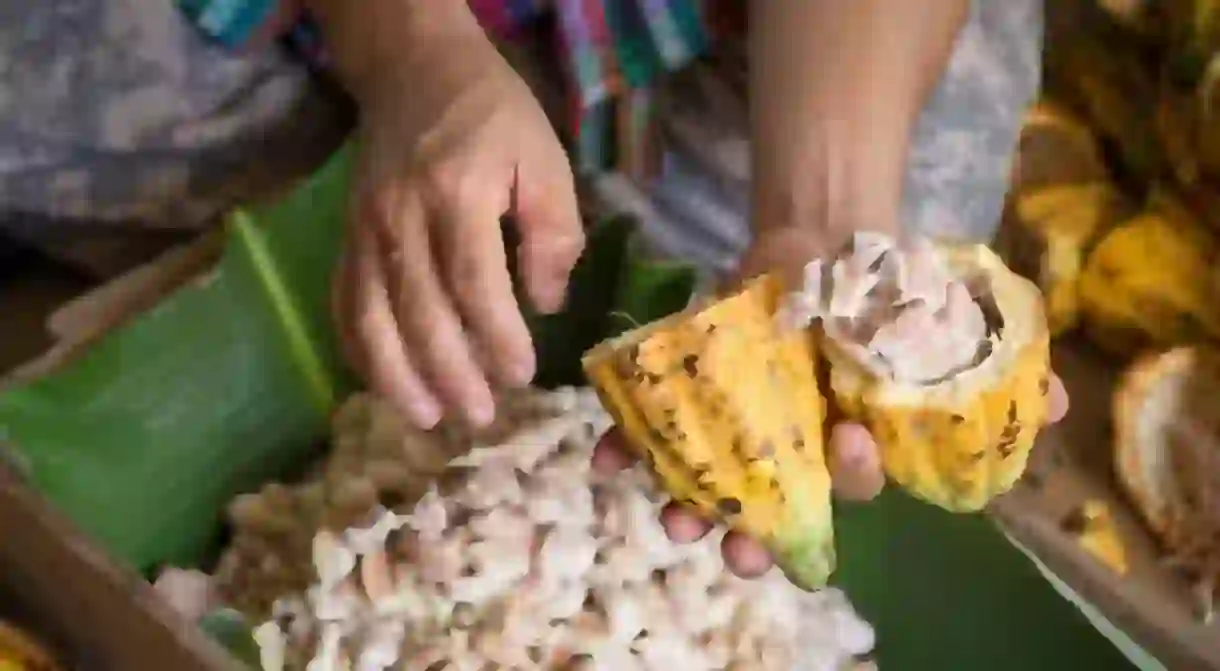This Country is the Chocolate Capital of the World – Here Are 15 Reasons Why

Despite Belgium’s close association with chocolate, Mexico is the undoubted birthplace of both the word and of the delicious treat itself. To this day, the country has a thriving chocolate industry and culture, with many exciting ways of consuming it. Here are 15 reasons why Mexico is the chocolate capital of the world.
Chocolate has been cultivated in Mexico for about 4,000 years
Archeologists have discovered evidence that people were enjoying chocolate in Mexico as early as 1,900 BC. Researchers in the Pacific coast of Chiapas found evidence of beverages made from cacao beans in bowls used by the Mokaya people.
The name has Mayan origins
Today, we think of chocolate as a sweet, sugary food. Yet the word comes from the Mayan word xocolatl, which means “bitter water.” The name gives a clue as to the way the drink was consumed – as a frothy, bitter drink that was often laden with chili powder.

The Mayans and Aztecs used chocolate in their religious rituals
Chocolate and blood were the two most common offerings for the Mayan and Aztec gods. Ancient Mayan leaders were often buried alongside bowls of chocolate, and the drink was also used in baptismal and marriage ceremonies.
A good cacao harvest was worthy of human sacrifice
For the Aztecs, cacao was associated with blood, and in one yearly ritual a handsome male slave was chosen to be sacrificed, to ensure a good harvest. The slave would dance and drink a gourd of blood mixed with chocolate before he was sacrificed to the gods.

The first Europeans to taste chocolate did so in Mexico
Hernán Cortés was probably the first European to consume chocolate. In 1519, the Spanish conquistador was invited into the court of the Aztec emperor Moctezuma II, who drank from pitchers of chocolate. The Spanish did not respond with kindness to this welcoming gesture – Moctezuma was imprisoned in his own home and later murdered, although whether by the Spanish or by his own people is unclear.
The Aztecs had to convince the Europeans to take chocolate seriously
The chocolate consumed by the Aztecs was an acquired taste, and few Spaniards enjoyed the drink at first. The Jesuit missionary Jose de Acosta did not speak highly of the beverage in his writings: “Loathsome to such as are not acquainted with it, having a scum or froth that is a very unpleasant taste. Yet it is a drink very much esteemed among the Indians, wherewith they feast noble men who pass through their country.” After the Spanish conquest of Mexico, chocolate was imported to Europe and it became a huge hit, especially when the Spanish added sugar or honey to offset its bitterness.

The Aztecs believed chocolate was stolen from the gods
According to Aztec legend, the plumed serpent god Quetzalcoatl stole chocolate from the gods and shared it with humanity.
Cacao beans were even used as currency
The Aztecs often used cacao beans as currency for the trading of goods and services. The Spanish invaders left records detailing cacao’s value – an avocado was worth three beans, and 100 beans could buy a turkey hen.

Mexicans would kill for chocolate in the 17th century
In his travel writings, the English Dominican friar Thomas Gage tells how the bishop banned the women of Chiapas from drinking chocolate during mass. The restriction so outraged the women of the parish that the bishop was later found dead, having consumed a glass of chocolate laced with poison. To this day, there’s a popular Mexican refrain that goes, “Cuidado con el chocolate de Chiapas,” or “Beware the chocolate of Chiapas.”
Ice-cold chocolate drinks are still popular today
The Costa Chica region of Guerrero state is famed for its chilate, a delicious blend of chocolate, cinnamon, rice, and brown sugar. The drink is served cold and is probably the closest thing today to the refreshing chocolate drinks consumed by the Aztecs.

Chocolate skulls are a Day of the Dead delicacy
Chocolate is often consumed during Mexico’s annual festivities for the Day of the Dead, when families honor their deceased loved ones. Chocolate beverages are often left at graves and family altars during the festival, while children often feast on chocolate skulls.
A warming chocolate champurrado is a festive favorite
The thick, corn-based champurrado beverage is always a favorite as the temperatures drop around Christmas. The thick beverage is made with chocolate and corn dough mixed with water or milk.

Chocolate is used in savory dishes as well
Chocolate is used in Mexico to make mole, the rich and delicious sauce that is widely regarded as the country’s national dish. The sauce is usually combined with chicken or pork, and is a rare example of a savory chocolate dish.
Chocolate is used to cure ailments
Cacao is a common remedy employed by folk healers (curanderos) in Mexico. The bean is often used alongside other herbs and spices in traditional healing ceremonies.














